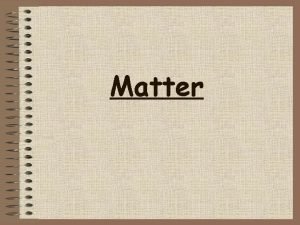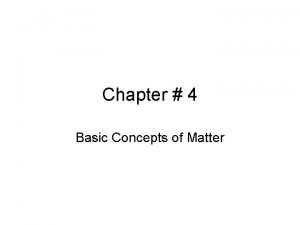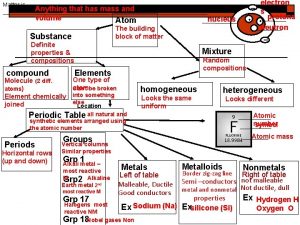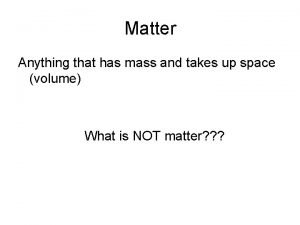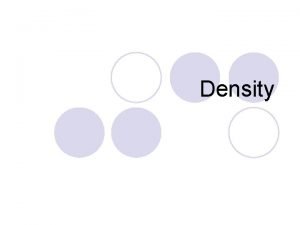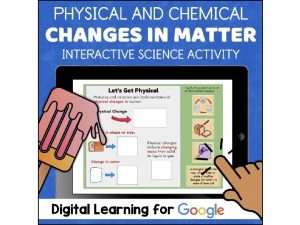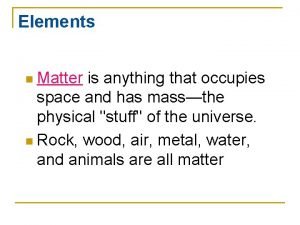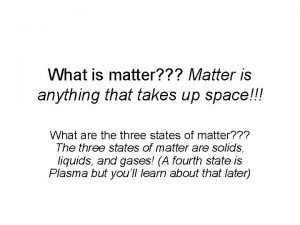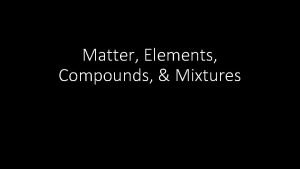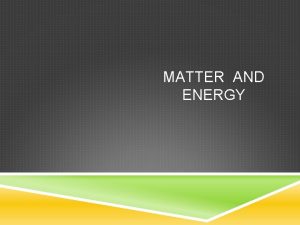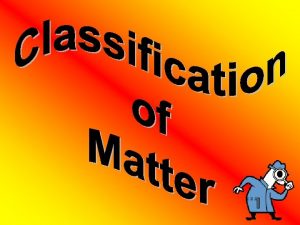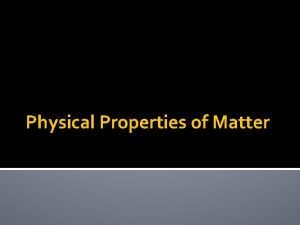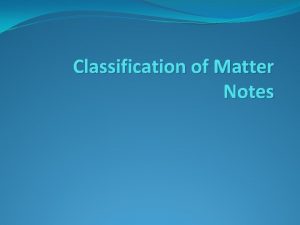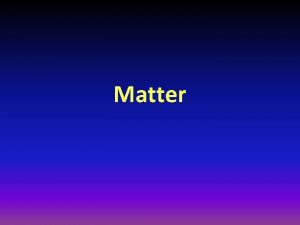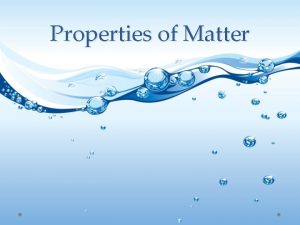Matter Lesson 1 Introduction of Matter Matter anything














- Slides: 14

Matter

Lesson 1 (Introduction of Matter) • Matter – anything that has mass and takes up space (Your body is matter) • Mass – describes the amount of matter in an object • Weight – is a measure of the gravitational force on an object • Volume - the amount of space that an object takes up, or occupies

• Density – is the measure of the amount of mass in a given volume

Lesson 2 (Properties of Matter) Physical property – A characteristic of a substance that can be observed and measured without changing the identity of the substance. - Use your senses to detect physical properties - Color, shape, size, and texture a few examples of physical properties of gold.

• Chemical property – describes a substance’s ability to change into a new substance with different properties. • - Common chemical properties include flammability and reactivity with substances such as oxygen, water, and acids. • - When left outdoors in wet weather, iron rusts. The ability to rust is a chemical property of iron.

Lesson 3 (Physical and Chemical Changes) • Physical change – is a change that affects one or more physical properties of a substance. Example - If you crumbled up paper it would change the papers shape, however the paper still has the same chemical identity.

• Chemical change – occurs when one or more substances change into entirely new substances with different properties. Example – In a campfire, the wood will burn and change to ashes. The wood has undergone a chemical change. The ashes are a new substance with different properties.

• Laws of conservation of mass – states that in ordinary chemical and physical changes, mass is not created or destroyed but is only transformed into different substances.

Lesson 4 (Pure Substances and Mixtures) • Atom – Atoms are the smallest unit of an element that maintains the properties of that element. • Atoms are the basic building blocks for all three types of matter, (elements, compounds and, mixtures. ) • An element is made up of one or more of the same kind of atom chemically combined. (Oxygen) • A compound is made up of different kinds of atoms chemically combined. (Water)

• A mixture contains a variety of elements and compounds that are not chemically combined with each other. (Nitrogen, Water , and Oxygen mixed together) • Pure substances – is a substance that has definite physical and chemical properties such as appearance, melting point, and reactivity.

A heterogeneous mixture is one that does not have a uniform composition. ( soil has dirt, rocks, leaves and even insects mixed together. ) Homogeneous mixture has a uniform composition where substances are evenly spread throughout. (sugar-water, the sugar dissolves and the mixture has the same sweet taste. )

Lesson 5 (States of Matter) • A solid substance has a definite volume and shape. • A liquid substance has a definite volume but not a definite shape. • A gas does not have a definite volume or shape.

Lesson 6 ( Changes of State) • The change in state in which a liquid becomes a solid is called freezing. • Melting – The change in state from a solid to a liquid. • As a liquid is warmed, its particles gain energy. Some particles gain enough energy that they escape from the surface of a liquid and become a gas. This process is called Evaporation.

• Boiling - A rapid change from a liquid to a gas, or vapor. • Condensation – The change of state from a gas to a liquid. • Sublimation – The change from a solid state directly into a gas. (dry ice) • Deposition – is the change in state from a gas directly to a solid. (ice crystals form in clouds)
 Matter vs mass
Matter vs mass Anything that has mass
Anything that has mass Is anything that has mass and takes up space.
Is anything that has mass and takes up space. Anything that has mass and occupies
Anything that has mass and occupies Matter is defined as anything that
Matter is defined as anything that Matter is anything with mass and volume
Matter is anything with mass and volume Something that takes up space
Something that takes up space Anything that takes up space and has mass
Anything that takes up space and has mass Matter is anything that has
Matter is anything that has Anything that has volume and mass
Anything that has volume and mass Matter anything that
Matter anything that Matter is anything that...
Matter is anything that... Matter is anything that has
Matter is anything that has Matter is anything that
Matter is anything that Ionized matter
Ionized matter

